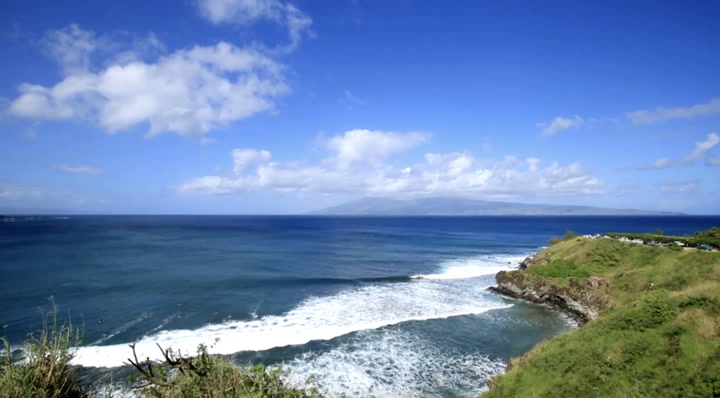1. Discovering the Best Beach in the U.S.
2. Kāʻanapali Beach: A Historical Gem
3. Activities and Attractions at Kāʻanapali Beach
4. Cultural Significance and Preservation
Can you guess which state is home to the best beach in the country?
Maui’s famously scenic shoreline has more than 30 miles of beaches, some with dramatic black sand and others with dreamy stretches of soft white sand. One of the only green sand beaches in the world, Papakōlea Beach, can also be found here. However, it is the stunning and historic Kāʻanapali Beach that took this year’s top prize for the best beach in the U.S., according to Tripadvisor’s latest ranking.
“When travelers envision a beach vacation, their thoughts often turn to warm weather, beautiful white sand beaches, calm oceans, open spaces, outdoor activities, water sports, relaxation, rejuvenation, and reconnection with themselves and others. Kāʻanapali Beach offers all those things, as well as award-winning resorts and restaurants, and great shopping,” stated Marilyn Clark, a member of GoTravelDaily’s A-List of travel advisors and owner of Lighthouse Travel. “Kāʻanapali Beach was once a retreat for Hawaiian royalty and has won numerous awards. It’s a great place to create lasting memories.”

The crescent-shaped three-mile stretch of soft white sand along Maui’s West Coast, north of Lāhainā town, has long been a magnet for travelers. With its clear blue waters, home to coral reefs and vibrant marine life, snorkeling and diving off Kāʻanapali Beach (meaning ‘Kāʻana cliff’ in Hawaiian) are favorite pastimes of visitors, who might spot colorful tropical fish, green sea turtles, and broad stingrays.
“Kāʻanapali Beach is a great place to enjoy many activities during a beach vacation,” remarked Clark. “It offers some of the island’s best snorkeling, swimming, stand-up paddleboarding, and sailing, and it’s a good place to learn to surf and scuba dive. For golf enthusiasts visiting Hawai’i, Kāʻanapali is home to two 18-hole golf courses.”
Moreover, for those who prefer to stay on dry land, spectacular whale watching opportunities abound. “Maui is one of the best places in the world for whale watching because its shallow, warm waters, especially in the Auʻu Channel, attract thousands of humpback whales every season,” stated Clark.
Every year, between December and April, the channel between neighboring Lānaʻi, Moloka’i, and Maui, known as the Maui Nui Basin, transforms into a protected sanctuary where migrating humpback whales come to breed. This makes Kāʻanapali Beach and Lāhainā prime spots for observing mothers and their young calves breaching the surface of the ocean, easily visible from the shore.
“While whales can be viewed from a distance at Kāʻanapali Beach, going on a whale-watching tour offers an even better experience. There’s nothing quite like seeing a whale breaching nearby,” Clark mentioned. The recommended practice ensures that all boats remain 100 yards away from the whales. Although whale sightings occur from November through May, the peak season falls between mid-January to the end of March.

Set against the west Maui Mountains, this beach has drawn visitors for over 60 years with its powdery white sand, swaying palms, and family-friendly activities. In fact, Hawai’i welcomed its first master-planned resort community, the Kāʻanapali Resort, in 1962, located right on Kāʻanapali Beach.
A couple of years later, the owners, American Factors, produced a promotional film about the area, branding it as the “Polynesian Riviera” and “the new queen of resorts.” Those who wanted to experience it could hop on a charter flight from Honolulu Airport, landing directly on an airstrip beside the beach. Today, the Kāʻanapali coast features two championship golf courses and several Maui resorts, including the Westin Kāʻanapali Ocean Resort Villas.
“Kāʻanapali is a resort area attracting many visitors, but there are also spots where one can find tranquility, such as quieter areas on the beach, spas for relaxation, or simply enjoying a tropical cocktail on your balcony while watching a stunning sunset,” Clark explained. “While it is family-oriented, the area also offers great options for couples and is a popular honeymoon destination.”
Besides its year-long allure for vacationers, Kāʻanapali Beach is steeped in Hawaiian culture and history.

“Today, the area known as Kāʻanapali Beach is divided by Black Rock, or Puʻu Kekaʻa, meaning ‘the rolling hill.’ This site is sacred; it is where a soul is said to leap into eternity,” noted Pōmaikaʻi Krueger, cultural advisor at the Westin. Nowadays, the self-guided Kāʻanapali Historical Trail & History and Legends Tour educates visitors about significant events and legends connected to Kāʻanapali Beach. For something more exhilarating, Pu’u Kekaʻa, situated in front of the Sheraton Maui Resort, hosts a dramatic cliff-diving ceremony each evening as the sun sets. A diver lights torches on the way to the edge and jumps about 30 feet into the water. This ceremony pays tribute to King Kahekili, who ruled Maui in the 18th century.
“Kahekili gained immense respect from many warriors for his jumps from Puʻu Kekaʻa, as the majority feared the spirits residing in the area,” Krueger added.

Kāʻanapali Beach has been facing significant erosion challenges for the past forty years. Recently, after a series of strong south swells, parts of the beach’s paved walkway collapsed into the ocean. “The rate and severity of damage have intensified, likely due to sea level rise and recent record high water levels,” commented the executive summary of the Kāʻanapali Beach Restoration Project, prepared by Hawaii’s Department of Land and Natural Resources. “Modern sea level rise results from human-induced global atmospheric and ocean warming. Changes in storm severity have also been attributed to climate change.” As part of the beach restoration project, the state has introduced 75 cubic yards of sand to the area. However, the community continues to seek long-term solutions to preserve the country’s best beach.





